Missing Presumed Killed (MPK)
and commemorated on the Naval Memorials at Chatham and Portsmouth
The names of 89 men who died but whose bodies were not recovered are listed below
Their position in the photograph of the ship's company as shown by the Key drawn by Lt Murdoch is given in square brackets.
ALDRIDGE, Albert W, Engine Room Artificer 3c, C/MX 61768, MPK
ANDERSON, Andrew, Electrical Artificer 2c, C/MX 47576, MPK [65]
ASHBY, Frederick, Able Seaman, C/JX 189695, MPK [23]
ASHWORTH, Albert R W, Able Seaman, C/JX 193031, MPK [104]
BAKER, James W B, Ordinary Seaman, C/JX 277401, MPK
BALES, Thomas G, Stoker Petty Officer (Pens), C/K 61934, MPK
BASS, James, Able Seaman, C/JX 131596, MPK
BENJAMIN, Herbert G, Supply Petty Officer, C/MX 46778, MPK
BIRD, Kenneth C, Ordinary Seaman, C/JX 269073, MPK
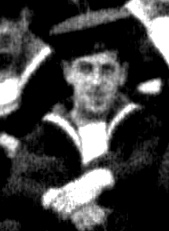 BRIGGS, Robert William, Able Seaman, BEM RFR, C/J 98193, MPK [106]
BRIGGS, Robert William, Able Seaman, BEM RFR, C/J 98193, MPK [106]
Briggs was one of five men awarded the British Empire Medal (BEM) for
crewing the whaler which rescued men from the eight ships which ran
aground on the Haisborough Sands off the Norfolk coast on the 6 August
1941. Robert William Briggs was 36 years old whe he was killed,
married and living in Dunfermline with his wife and child not far from
Rosyth where his ship was based.
He was the son of Thomas Charles and Emily Ada Rose Briggs; husband of
Margaret Doris Briggs, of Walthamstow, Essex. His widow was left with a
three month old son and went to live with her parents in Walthamstow
and lost contact with her husband's family. She was presented with his
BEM at Buckingham Palace.
BROWN, Archibald Sinclair, Able Seaman, RNVR, P/CD/X 2688, MPK [16]
Brown was one of the ratings commended for "Jumping overboard and
rescuing men from the sea during a gale" when several merchant ships
ran aground on Haisborough Sands on 6 August 1941.
BURCH, Henry "Harry" Bernard, Ordinary Seaman, P/JX 257054, MPK
Lt Cdr Angus Mackenzie described the circumstances in which Harry Burch was lost while trying to escape through a scuttle:
“Some of the messdeck scuttles had been
blown open, and a number of seamen appeared and called to me for
assistance. I think Leading Seamen Averley was the first I spoke to and
I directed him to get as many men as possible to follow him aft to the
escape scuttles. I assisted him from outboard to open one scuttle. I
believe Leading Seaman Averley and Adams, and A.B’s Benningfield,
Kennedy and Robinson came through. A.B Burch attempted to get to the
scuttle, but a heavy lurch to starboard flung him back and I did not
see him again”.
Sheena Mackenzie, the daughter of Lt Cdr Angus Mackenzie, the CO, added:
“He suffered agonies over Vimiera, he
felt he lived while younger men died. He was bending over on the bridge
patting Andy his Scottish Terrier and he reckoned that was why he was
blown clear. My mother made him take Andy to sea because the dog had a
bad temper and was forever biting us – irony there! A boat was launched
before Vimiera sank and it picked up those crew members not trapped
below deck or killed in the blast including my father. The water was
covered with oil. They recognised him by the tattoos on his arms."
Every year on the anniversary “he would put an announcement in
the Daily Telegraph and I was surprised how many wrote saying how
much they appreciated that”.
Harry Burch's parents parents who expressed their grief in a similar way by placing an notice in the
Manchester Evening News on 10 January 1944:
As late as 1954 the family of Harry Birch posted an entry in the
Manchester Evening News on the anniversary of his death:
He was 31 years of age, the son of Henry and Ada Burch, and
husband of Annie Burch, of Chadderton near Oldham, Lancashire. I am
hoping to hear from surviving members of his family and add a portrait
and further details of his life to this brief entry.
CANNON, Arthur A W, Chief Petty Officer, C/J 112131, MPK [60]
CARROLL, John, Ordinary Seaman, C/JX 258530, MPK
CARRUTHERS, Thomas L, Ordinary Coder, C/JX 230272, MPK
CHALMERS, David S, Able Seaman, C/JX 169545, MPK [29]
CLARK, Francis, Able Seaman, RNVR, P/CD/X 2598, MPK [72]
CLARK, Robert G H, Ty/Act/Petty Officer, C/JX 134241, MPK [45]
CURTIS, Leonard, Leading Seaman, C/J 102494, MPK
DEAN, Henry G, Chief Petty Officer (Pens), DSM, C/J 28737, MPK [57]
Dean was awarded the DSM for "good services in Operations off the
Dutch, Belgian and French Coasts", the action at Boulogne on 23 May
1940 when
Vimiera brought back 1,955 troops from the harbour city on the day it fell to German forces.
DYBALL, James, Able Seaman, RNVR, P/CD/X 2867, MPK [24]
DYE, Albert E G, Stoker 1c, C/KX 97653, MPK [9]
EDELSTON, Frederick, Able Seaman, RNVR, P/CD/X 2870, MPK [28]
ELLIOTT, William S, Able Seaman, RNVR, P/CD/X 2384, MPK [107]
FARRELL, James, Able Seaman, RNVR, P/CD/X 1557, MPK [109]
AB James Farrell was born a Farrell
and married to a Farrell. He was the
son of Catherine Farrell and husband of Helen Farrell, of
Glasgow.
His age at death is not known but he left at least one child and the
brief details given here were provided by Anne Farrell, a Grand
daughter. We hope
to find out more about his life from her. His name is recorded on the
Portsmouth Naval Memorial.
FASEY, William H, Able Seaman, C/JX 158935, MPK
Fasey was one of the ratings commended for "Jumping overboard and
rescuing men from the sea during a gale" when several merchant ships
ran aground on Haisborough Sands on 6 August 1941.
FEARON, Matthew E, Ordnance Artificer, RNSR, C/SR 8027, MPK
FIELDING, James N, Stoker 1c, C/KX 91729, MPK [8]
FORBES, William L, Ordinary Seaman, C/JX 270833, MPK
FOWLER, Stephen H, Leading Telegraphist, C/JX 135864, MPK
FRENCH, Edward W, Canteen Manager, NAAFI, MPK
GIBBONS, John D, Signalman, C/JX 211604, MPK [41]
Derek Norris, the nephew of George Norris who married John Gibbon's
widow in 1951, supplied the photographs and told me what he knew about
her first husband:
"John Douglas Gibbons was born on 8th
August 1917. He lived in Croydon, Surrey with his parents Henry and
Edith Gibbons and his brother James who was five years older than John.
In the thirties he cycled extensively around the villages of Surrey and
Kent recording the scenes on his camera. John joined the Rover Scouts
and in July 1939 attended the World Rover Scout Moot at Monzie Castle
in Scotland, an historic, memorable and enjoyable meeting (see photograph below) but poignant
in hindsight as so many who attended from different parts of the globe
would not survive the next few years. During the late thirties he was
working as a Civil Service clerk in central London, which is where he
met Marian Hutchinson who worked in the same office. They were married
in Croydon in April 1941 not long before John's tragic death. Marian
was naturally heartbroken but remarried after the war and went on to
live back in Pimlico, London where she had been raised and stayed there
until her own death in 2015."
Marian Georgina Edney Gibbons (nee Hutchinson) was born in 1917 and was
98 when she died in 2015. She had no children by either husband and
no brothers or sisters. She came from Pimlico, a smarter area of London
than Brixton where where her second husband grew up. Derek Norris is
probably her only living relative and my main source of information
about John Gibbons.
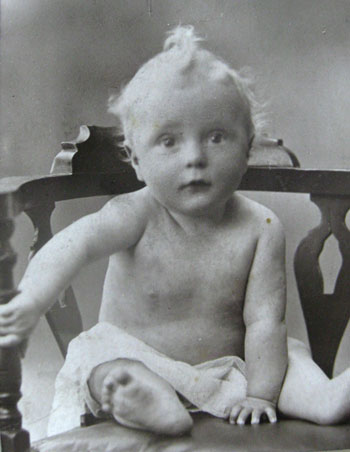
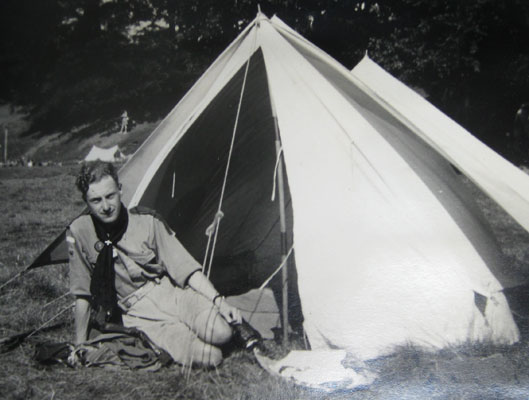
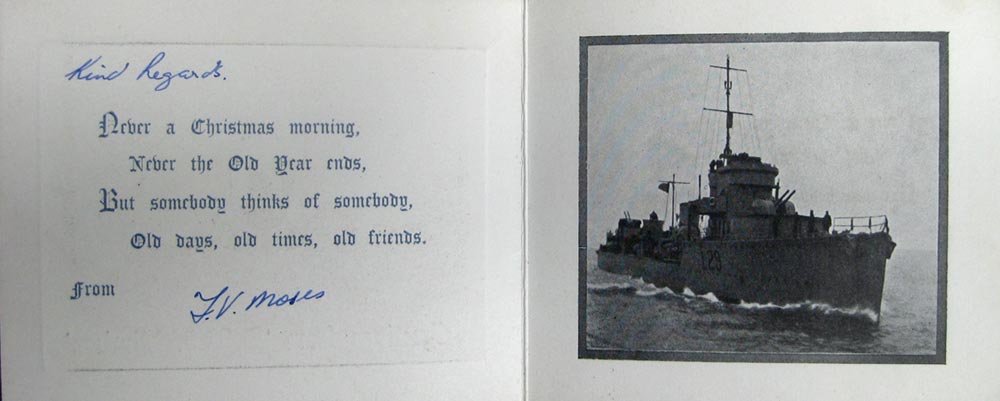 Francis Moses, a Telegraphist in HMS Vimiera, was also reported MPK
Francis Moses, a Telegraphist in HMS Vimiera, was also reported MPK
The photograph below may have been enclosed with the card and given to
John Gibbons in December 1941 a month before he was killed
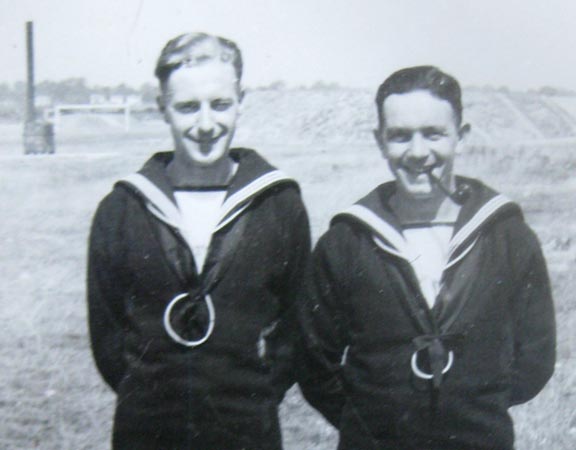
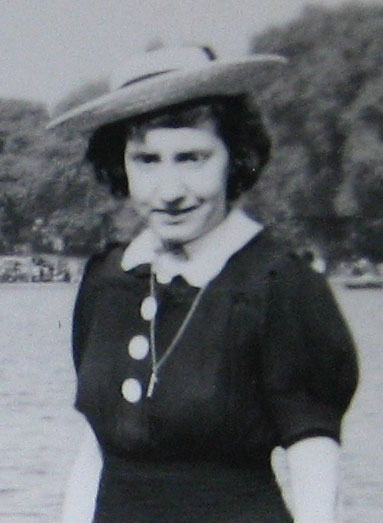 Left: Signalman John Gibbons is on the left and the shipmate on the right may be Telegraphist Francis Moses
Left: Signalman John Gibbons is on the left and the shipmate on the right may be Telegraphist Francis Moses
Right: Marian arian
Georgina Edney Hutchinson, John Gibbons' future wife, by the
Sepentine in Hyde Park, London, in 1939 - click image to view the full image
It would be natural that
"Bunting tossers" (Signalmen) and "sparkers" (wireless telegraphists)
would became friends
since they shared the same mess but there is no evidence that the
photograph was enclosed with the card sent by Francis Moses and even if
it was it might not be of Francis Moses. There is a closer resembles to
Meadows than Francis Moses but there were six telegraphists on
Vimiera
and John Gibbons would have known them all: Meadows (20), PO Whitworth
(53), Fowler, O'Connell (110), Steven and Francis Moses (20) but not
all are identified as in the photograph. Do
get in touch if you can identify John Gibbons' shipmate.
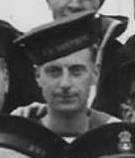
Signalman John Gibbons
|
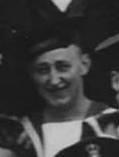
Tel. Francis Moses
|
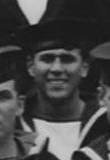
Tel. Meadows
|
HAMILTON, Malcolm G, Ordinary Signalman, C/JX 228967, MPK
HAND, Harry, Ty/Act/Leading Stoker, C/K 64335, MPK
Harry Hand was born on 30 June 1901 at a workhouse in Penzance,
Cornwall, and ran away to join the Navy as a boy sailor in 1914 to
escape the harsh conditions - but his service certificate gave his
place of birth as Plymouth. His Grandson, Bruce Webster, told me
what he learned about Harry's early life from his Mother, Rosemary, who
Bruce looked after until her death aged 89 in 2019. Harry Hand was the
illegitimate son of a Dutch sailor but his Mother eventually married.
Harry may have been an embarrassment and when only 14 he ran away to
sea on a merchant ship and in July 1919 aged 18 signed on at Chatham
for 12 years service in the Royal Navy. The previous ship
on his Service Certificate was a merchantman, the Elder Dempster
Liner SS
Biafra (Official No. 124075).
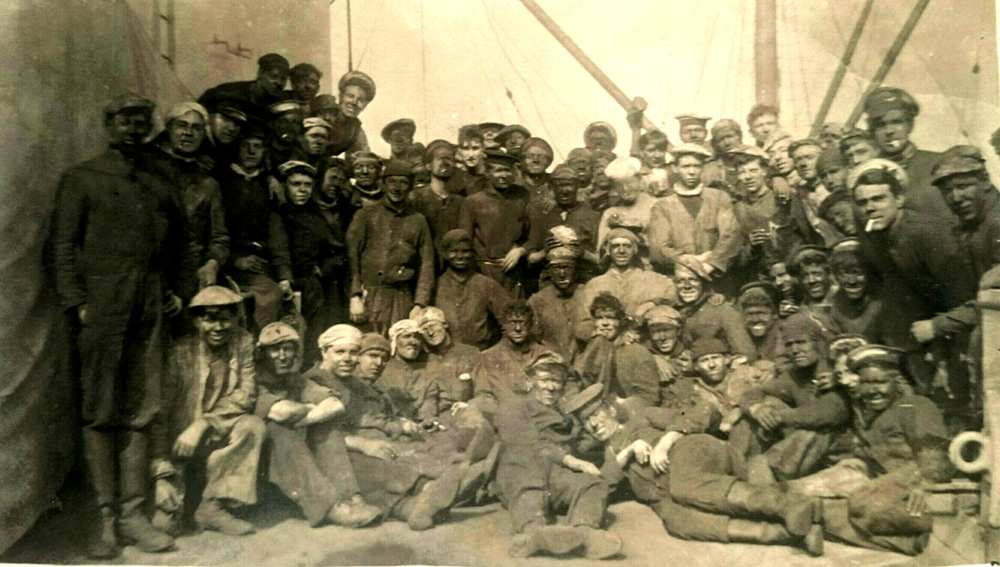
Harry Hands is the boy kneeling on the left in this photograph
taken aboard an unidentified ship around
1916-18
Courtesy of Bruce Webster
In 1924 when he sent this Christmas card home he was serving
in HMS
Canterbury, a member of the 2nd Cruiser Squadron in the Atlantic. What
little is known of his life at sea is derived from the letters he wrote
home to his wife Mildred Hand (née Heather) known as Milly.
On 16 November 1937 he joined the County Class Cruiser HMS
Shropshire
which was part of the hunting group despatched to the River Plate
in December to join British Forces which had intercepted the Graf Spee
in the
Battle of the River Plate, the first major naval engagement of the war, but
Shropshire arrived too late to take an active part iin the battle. His wife developed long
term schizophrenia from which she never recovered and Harry Hand joined HMS
Ajax and returned to Britain on compassionate leave.
Despite this he
resumed his wartime service in the Navy and joined HMS
Vimiera on 18 July 1940 as Stoker 1st Class but was promoted to Leading Stoker on 13 January 1941. He was not aboard
Vimera
during the action to evacuate the Welsh and Irish Guards from Boulogne
in May 1940 and has not been identified as being in the photograph of
the ship's Company taken at Rosyth in July 1941.
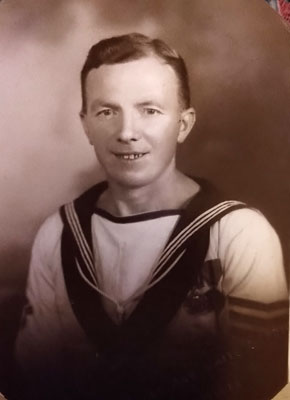
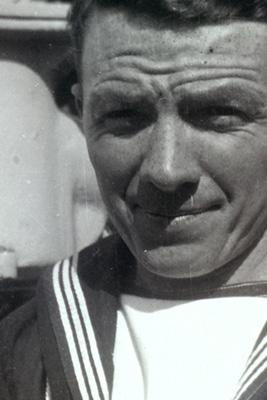
Leading Stoker Harry Hand
Courtesy of Bruce Webster, his Grandson
When he died on 9 January 1942 he left behind his sick wife, two daughters and a son. His grandson, David Webster,
supplied the photographs and will, we hope, provide further details of
his grandfather's life and wartime service in HMS
Vimiera.
HARRIS, Reginald J, Ty/Leading Cook (S), C/MX 60132, MPK [84]
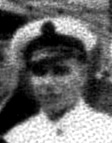
Reginald John Harris was born on 21 June 1921 and enlisted in the
Navy on his eighteenth birthday in 1939. He was a "brewey
" at
Elgoods Brewery in his home town of Wisbech
when he signed on as an OD (Ordinary Seaman) for twelve years. After
basic training he was drafted to HMS
Vimiera
as Assistant Cook on 25 January 1940. Less than a moth later he was
rated as Cook and by the 7 September 1941 he was a Leading Cook in HMS
Vimiera. He was in HMS
Vimiera during the evacuation of the Welsh and Irish Guards from Boulogne on the 23 May 1940.
In December 1941 he returned to his home in the market town of Wisbech in the
Cambridgeshire Fenns to spend Christmas with his Mother and stepfather and within two weeks of returning to duty on 30 December
his mother received a telegraph informing her that he was missing after
Vimiera detonated a mine and sank in the Thames estuary.
HAWES, Frank, Ordinary Seaman, C/JX 248318, MPK
Frank Hawes was born at Ossett, a market town near Wakefield in the
West Riding of Yorkshire, on the 30th June 1913. He was the second son
and youngest child of licensed victualler Albert George Hawes of
Prospect Road, Ossett and confectioner, Ellen Miranda Thomas. The Hawes
family were licensees of the Coopers’ Arms, Ossett between 1901 and
1924, with Albert George Hawes holding the licence first between 1905 -
08 and then between 1915 - 24. Frank Hawes was educated Ossett Grammar
School and his name is displayed on the school WW2 Memorial.
In the summer of 1936, Frank Hawes married Margaret Moody, who had been
born in the Barnsley area in 1911. By September 1939, Frank, aged 26
years, and Margaret, aged 28 years were living at 103, London Road,
Wallington, Surrey. Their only child, Ann C. Hawes, born in early 1938
in Wallington. Following the tragic death of her husband, Margaret
married Thomas M. Hay in Sheffield in Spring 1945. The couple do not
appear to have had any children.
HILLSON, George William, Engine Room Artificer 5c, C/MX 76798, MPK
Address at date of death: Wootton Avenue, Peterborough.
HODGSON, William H, Engine Room Artificer 2c, RNR, C/X 919 EB, MPK [78]
Hodgson was commended after the rescue of seamen from a merchant ship
which ran aground on Haisborough Sands on 6 August 1941 "For being at
his station below without respite from 0430 until 1400. The engines
were in constant use throughout this time and although out of sight it
was in no small way due to his efforts that the rescue was made
possible" William Henry Hodgson was the 39 year old son of William
Henry and Margaret Hodgson and was married to Kathleen Hodgson, of
Wallsend, Northumberland.
HURLEY, James E, Able Seaman, C/JX 191570, MPK
HUTCHINGS, George V, Signalman, RFR, C/J 90136, MPK
Hutchings was commended for "Continual vigilance. He was instrumental
in locating men in the water and in directing the operations of the
lifeboats" during the rescue of seamen from a merchant ship which ran
aground on Haisborough Sands on 6 August 1941. George Victor Hutchings
was 40 when he died. He was married to Vera E. M. Hutchings, of Wood
Green, Middlesex.
INGLIS, Alfred J, Ordinary Seaman, C/JX 279994, MPK
Service Cert & Press Cutting from Aberdeen Press & 22 Jan 1942 Jnl and ???
INGRAM, William J, Stoker 2c, C/KX 130677, MPK
IRELAND, Eric L, Able Seaman, C/SSX 32901, MPK [3]
JOHNSTON, James D C, Able Seaman, RNVR, P/CD/X 2885, MPK [113]
KELLY, William, Stoker 1c, C/KX 117545, MPK [12 or 34]
KEMP, Frank E, Able Seaman, C/JX 150664, MPK [13]
KIDSON, John T, Sick Berth Attendant, C/MX 57851, MPK [44]
LEE, John T, Able Seaman, C/JX 155588, MPK
Lee was one of the ratings commended for "Jumping overboard and
rescuing men from the sea during a gale" when several merchant ships
ran aground on Haisborough Sands on 6 August 1941. John Thomas Lee was
the son of Ernest Thomas and Ethel Jane Lee, of Market Harborough,
Leicestershire, and was 21 when he died.
LEMON, Leonard, Ordinary Seaman, C/JX 260559, MPK
Leonard Lemon was 32 and living with his wife Phyllis in Colindale,
north London when he died. He was the youngest of four children and was
born at Carlingford, near Dundalk in County Louth, Ireland, on 21 July
1909. His father, David Lennon (1877-1919) was in the Navy and Leonard
and his older brother Alexander also joined the Navy. We do not know
his trade but he could not have been in the service long as he was
still an Ordinary Seaman (OD). Leonard and Phyllis had no children and
she remarried. His great nephew, David Lennon, has provisionally
identified him in the photograph of the ship's company. His body was
not recovered and his name is recorded on the Chatham war memorial.
LITTLEWOOD, William J, Stoker 2c, C/KX 134156, MPK
LORD, Matthew, Ordinary Seaman, C/JX 260968, MPK
MCANNA, Francis, Act/Leading Signalman, C/JX 144324, MPK
McAanna was commended for "Continual vigilance. He was instrumental in
locating men in the water and in directing the operations of the
lifeboats" during the rescue of seamen from a merchant ship which ran
aground on Haisborough Sands on 6 August 1941.
MCCORMACK, Andrew, Able Seaman, RNVR, P/CD/X 1995, MPK [105]
McCormack was one of the ratings commended for "Jumping overboard and
rescuing men from the sea during a gale" when several merchant ships
ran aground on Haisborough Sands on 6 August 1941. Anrewq McCormack was
the 27 year old son of Thomas and Annie McCormack, of Glasgow.
MCDOUGALL, Duncan A, Able Seaman, RNVR, P/CD/X 2890, MPK [27]
MILLER, William, Able Seaman, RNVR, P/CD/X 2705, MPK
MILLS, Earton F, Able Seaman, C/JX 174174, MPK [47]
MILWAY, Charles J, Able Seaman, C/JX 174169, MPK
MOFFATT, John H, Able Seaman, RNVR, P/CD/X 2873, MPK [63]
MORRIS, Ronald D T, Stoker 1c, C/KX 107878, MPK
MOSES, Francis V, Ordinary Telegraphist, C/JX 197846, MPK [18]
Francis Victor Moses was born on 27 November 1919 at Crook in County Durham, the son of Walter Harrison Moses and
Emma Elizabeth Moses. He was a 22 year old Telegraphist and a friend of
Signalman John Gibbons and may have given him
the photograph of them together included in his entry above. Do
get in touch if you can identify him or provide further details of his life.
NUGENT, Joseph, Able Seaman, RNVR, P/CD/X 1547, MPK [25]
O'CONNELL, Arthur, Telegraphist, C/JX 181097, MPK [110]
ORD, Ralph W E, Ty/Act/Petty Officer, C/JX 125038, MPK
READING, Leslie W H, Stoker 1c, C/KX 86194, MPK
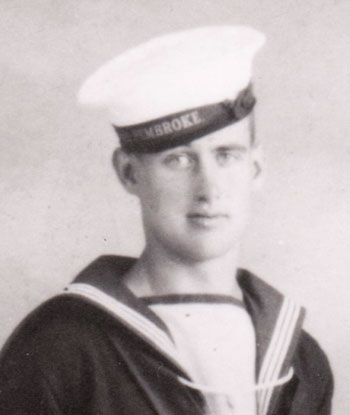
Leslie William Henry Reading was born in the East End of London
in March 1916. He left behind a widow and a baby daughter, aged two
months. He was able to see them just once, briefly, when the baby
was a few days old.
His daughter, Janice Lesley Matthews, sent these brief details of his
naval service shortly before the 80th anniversary of his death:
He joined the Navy in 1935 and was one of 160 stokers in HMS
Kent when she was the Flagship on the China Station and a frequent visitor to Hong Kong. His name appears in the crew list in
HMS Kent: An illustrated record of her commission as Flagship of the China Station, 1934-1936 (Ye Olde Printerie, Hong Kong, 1937).
Kent
went into Reserve at Portsmouth on 30 January 1937 and he returned to
the Barracks at Pembroke 2 and "bought himself out" of the Navy when he
married.
He was recalled when war was declared and joined the Light Cruiser HMS Calcutta
after her conversion to an anti-aircraft cruiser in 1939 and served
with her during the Norwegian Campaign and the evacuation from Dunkirk
in 1940. He left Calcutta in September 1940 (she was bombed and sunk on 1 June 1941 off Alexandria, Egypt) and joined HMS Vimiera on the 20 September 1941 and remained with her until his death when Vimiera was lost.
Janice Matthews added: "this is a small memorial for him, I
would prefer not to give any more family details. His name is on
the Naval Memorial at Chatham, a lovely memorial in a beautiful
location. I have been able to visit and leave flowers for
him. I am very proud of my father."
The portrait on the left was cropped out from a typical stylised
full length studio portrait taken against an idealised backdrop of a country setting
typical of photographs taken by young men for sending home to their
family in case they were killed. The ribbon on his cap bears the name
HMS
Pembroke, the naval base at Chatham on the Medway.
RITCHIE, James, Ty/Act/Leading Seaman, C/JX 153195, MPK [32]
ROWLANDSON, Samuel R, Able Seaman, C/JX 143413, MPK [58]
RUCHLEY, John H, Able Seaman, C/JX 197599, MPK [64]
RUFFELL, Henry A G, Signalman, C/JX 268941, MPK
SHIELDS, Thomas D C, Able Seaman, RNVR, P/CD/X 2443, MPK [49]
SHIPP, Robert I, Chief Petty Officer Stoker (Pens), DSM, C/K 59747, MPK [70]
Service Certs - three!
SMITH, Frank, Able Seaman, C/JX 199235, MPK [26]
SMITH, Lewis E J, Ty/Act/Leading Seaman, C/J 113758, MPK [31?]
STEVEN, John S, Telegraphist, C/JX 154841, MPK
STONER, Reginald E, Ty/Act/Petty Officer, C/J 109677, MPK [73]
SWINTON, Thomas, Stoker 2c, C/SKX 1523, MPK
OD Robert "Roy" M Thomas (C/JX 277180) MPK [incorrectly identified as 38]
In October 2022 I was e-mailed these brief details by Deborah Protheroe, the niece of "Roy" Thomas, who was killed when HMS Vimiera sank less than a year after he was conscripted into the Navy"
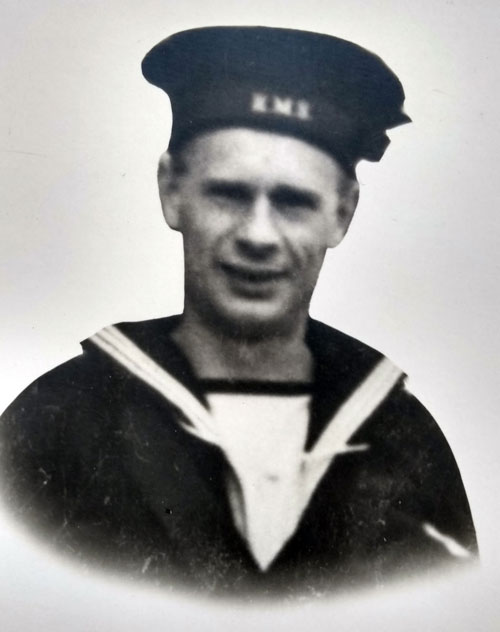
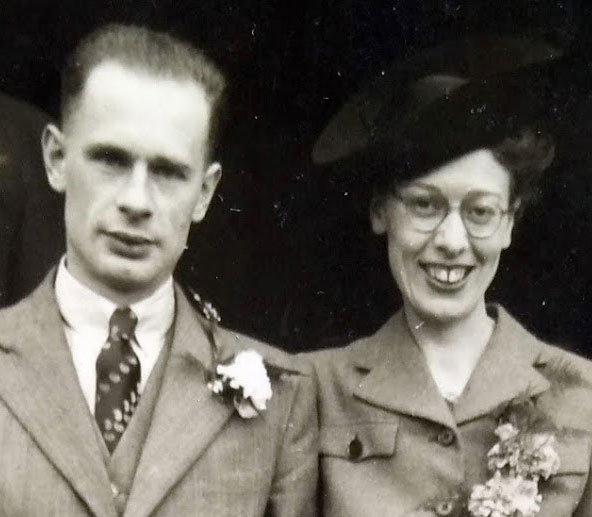
"I'd
like to pass on some details about Ordinary Seaman Robert M. Thomas
(C/JX 277180, MPK) who was my mother's brother, known as Roy. He died
before I was born but some photos and records have been passed on to
me. Roy was born in Cardiff in 1911, and worked as a civil servant in
the Ministry of Labour at Llanelli. Roy was a quiet, thoughtful man who was fond of books and classical music, especially Mozart. He married Margaret (Peggy) Little
in November 1940 - on right. They had no children. His war service began at HMS Ganges in May 1941, continued at HMS Pembroke I in July, and he joined HMS Cochrane II/Vimiera on 12 August. He is commemorated on the Chatham Naval Memorial and the Ministry of Labour Staff War Memorial in Cardiff. Peggy never remarried. She worked at the Ministry of Labour at Llanelli until her retirement, and died in 2004. "
All the images reproduced here are courtesy of his niece, Deborah
Protheroe; click to enlarge and view in a separate window. The names
of the other men in the photographs below are not known but they all appear to have been taken at HMS Ganges so Roy is probably the only man in them who served in HMS Vimiera
|
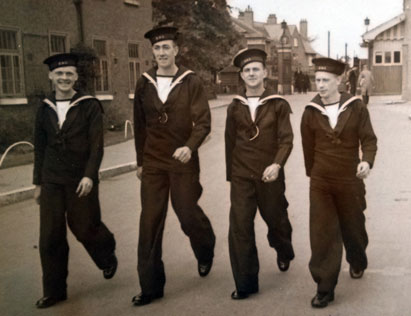
Roy Thomas is on the right
|
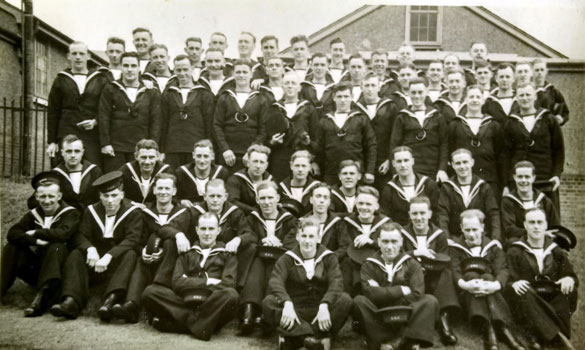
He is sitting, second from the right in the second row, taken during training at HMS Ganges
|
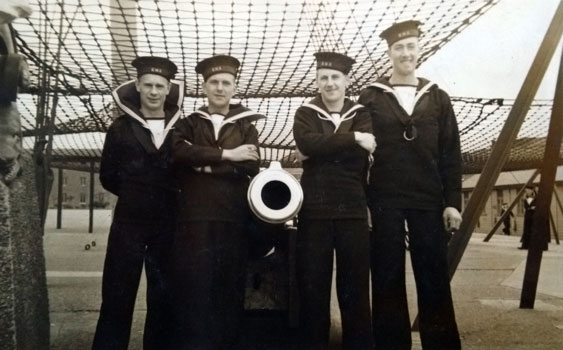
Roy Thmas at HMS Ganges is on the left
|
THOMPSON, Harry H, Shipwright 1c, C/MX 47080, MPK [62]
THOMSON, Owen E, Able Seaman, RNVR, C/LD/X 5206, MPK [115]
TOMKIN, John W, Ty/Petty Officer Cook (S), C/MX 48337, MPK [85]
TREEN, Gerald F, Ordinary Seaman, C/JX 277640, MPK
TUDOR, Norman A, Able Seaman, C/JX 187106, MPK [67]
Norman Alfred Tudor was a 22 year old Able Seaman, the son
of Arthur
and Alice Tudor, of King's Heath, Birmingham. He was unmarried and his
medals were posted to his parents in Birmingham after his death and
kept by them in the original package and were brought by his son in
law, David Adderley, to the last reunion of
the V & W Destroyer Association at Derby in 2017.
David Adderley also
brought with him several photographs and other documents but it was not
possible to copy these at the reunion in Derby but we are hoping to
receive further details of Norman Tudor's short life and scans of
photographs for adding to his entry. AB Norman A Tudor C/JX 187106, is
thought to be number 67 in the photograph of the ship's company taken
on the quayside
at Rosyth in 1941 but it is difficult to identify him with certainty.
WATKINS, Thomas, Able Seaman, C/JX 184904, MPK [100]
WATSON, David, Stoker 1c, C/KX 100077, MPK
WAUGH, Joseph A, Ordinary Seaman, C/JX 266912, MPK
WEBSTER, Stanley A, Ordinary Seaman, C/JX 183323, MPK
WHITNEY, Sydney, Ty/Act/Leading Seaman, C/JX 152423, MPK
WILKINSON, Charles R, Stoker 2c, C/SKX 1525, MPK
These details are taken from the web site of the Scotter Parish
Council in Lincolnshire:
"Charles Roy Wilkinson was 19 when he died. He was born on
12th November 1922, 11th of the 13 children of William and Annie
Wilkinson who lived at 14 The Green, Scotter, in Lincolnshire. The
family called him Charlie and to friends he was known as 'Channy'.
Charlie became a lorry driver's mate and seems to have been a likeable
young man who was quite popular with the ladies. He had a reserved
occupation but chose to serve his King and Country by joining the Royal
Navy."
Two years after he died a memoriam was placed in the
Gainsborough News:-
"A happy sailor boy so free;
Who did his bit, and sailed the sea,
We little thought when home he left,
To sail to his eternal rest"
From Mother and Dad.
WILSON, Archie W G, Leading Stoker, C/KX 84427, MPK [46]
WINSLEY, Charles E, Stoker Petty Officer, C/K 67136, MPK
Service Certs (3)

 HMS VIMIERA
HMS VIMIERA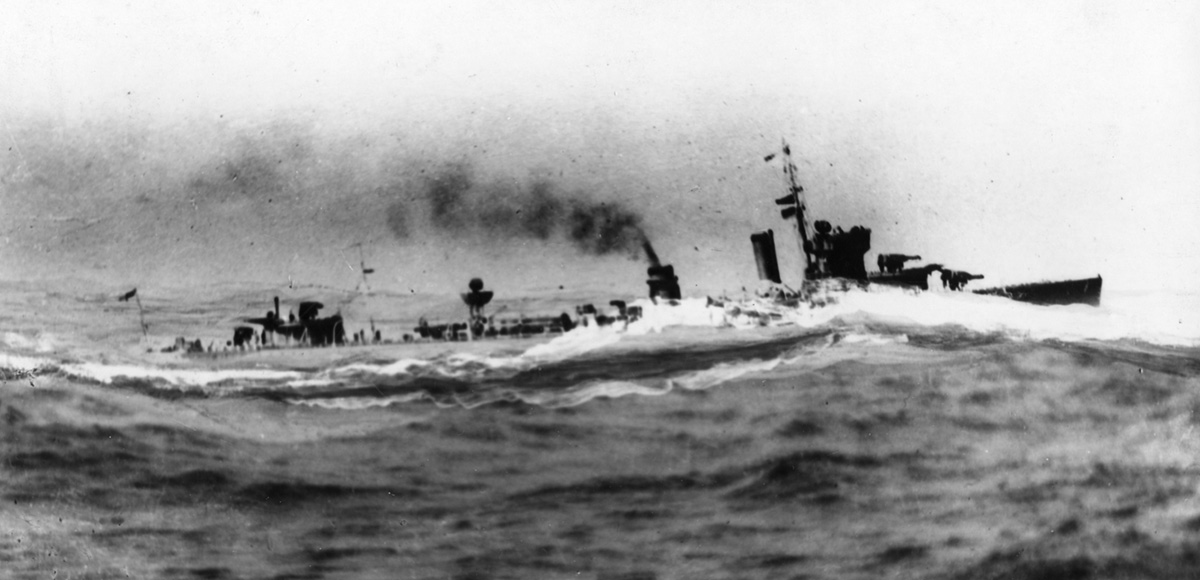
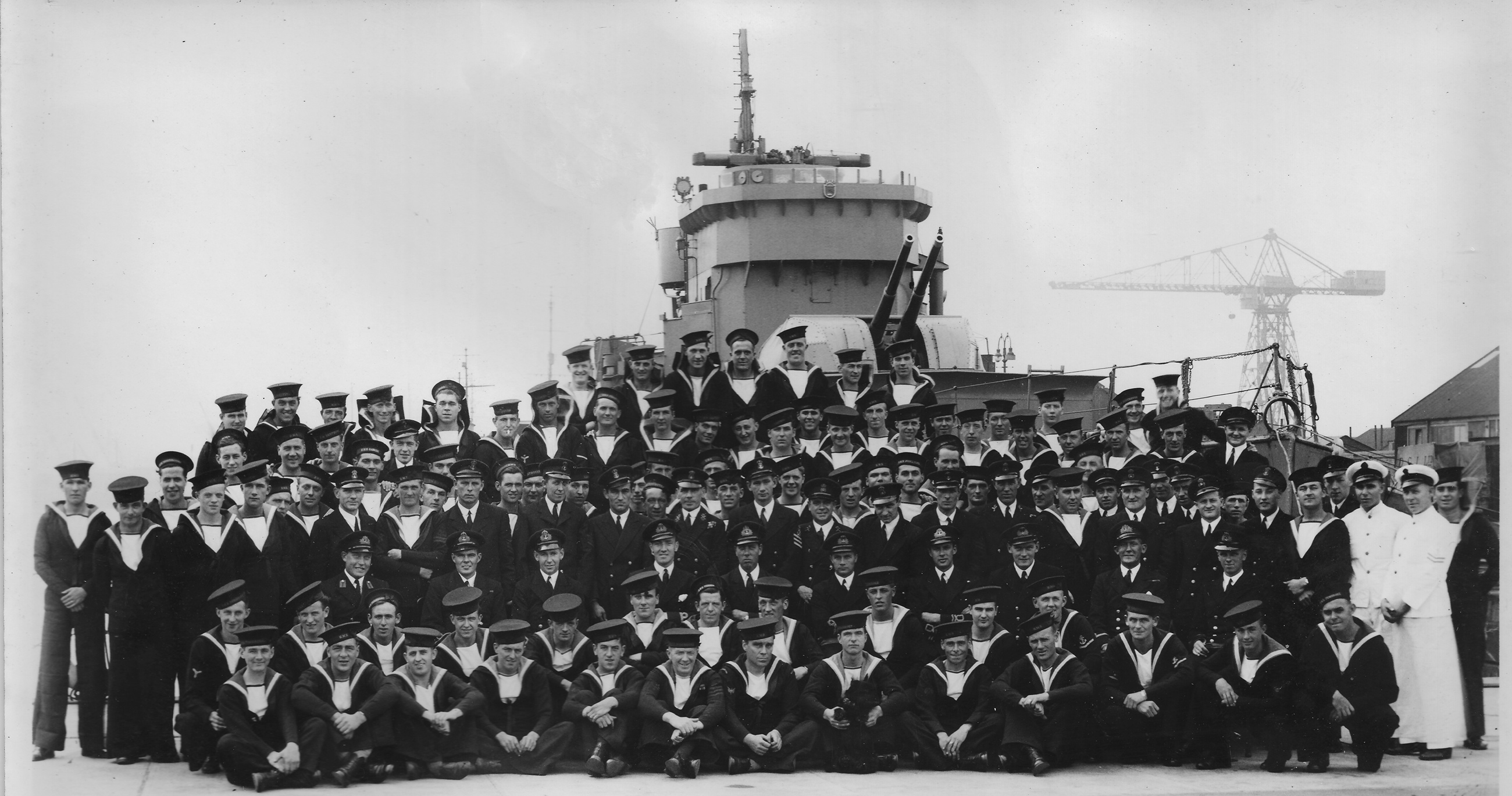
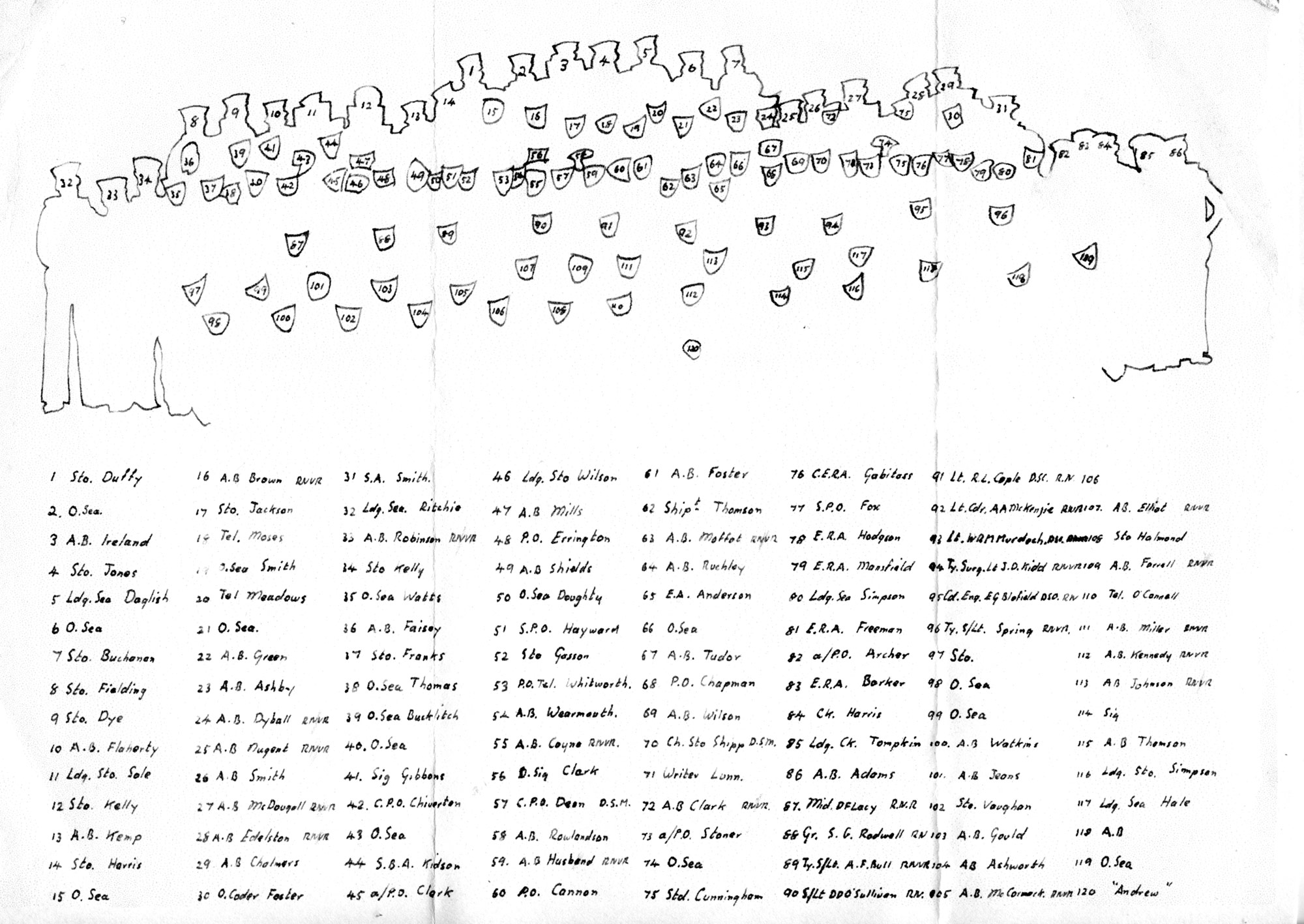
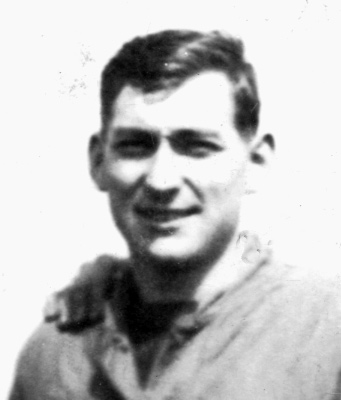 John Daglish (1915 -74) was born on 2 August 1915 at Whitehaven in
Cumberland and was a miner before he enlisted in the Navy on 30 January
1934. He joined HMS Ramilies, a Revenge Class Battleship as an Ordinary Seaman (OD) and was rated AB when he left to train at HMS Osprey,
the Navy's anti-submarine training establishment at Portland, Dorset,
in the use of Asdic (Radar) and become a Submarine Detector, his
specialism throughout his naval service. On 23 May 1936 he joined the
Asdic department on HMS Diana,
a D-Class destroyer launched in 1932. She was sold to Canada in 1936,
renamed and lost in a collision in 1940. He joined HMS Pelican,
a new Egret Class Sloop built as a convoy escort and anti-submarine
ship when first commissioned in April 1939. By the outbreak of war he
was a Leading Seaman and after a further a training course at HMS Osprey was promoted to HIgher Submarine Detector (HSD) before joining the Asdic team on HMS Vimiera on 26 January 1940. He was aboard Vimiera when she made two trips to Boulogne harbour on the 23 May 1940 and brought back 1,955 troops.
John Daglish (1915 -74) was born on 2 August 1915 at Whitehaven in
Cumberland and was a miner before he enlisted in the Navy on 30 January
1934. He joined HMS Ramilies, a Revenge Class Battleship as an Ordinary Seaman (OD) and was rated AB when he left to train at HMS Osprey,
the Navy's anti-submarine training establishment at Portland, Dorset,
in the use of Asdic (Radar) and become a Submarine Detector, his
specialism throughout his naval service. On 23 May 1936 he joined the
Asdic department on HMS Diana,
a D-Class destroyer launched in 1932. She was sold to Canada in 1936,
renamed and lost in a collision in 1940. He joined HMS Pelican,
a new Egret Class Sloop built as a convoy escort and anti-submarine
ship when first commissioned in April 1939. By the outbreak of war he
was a Leading Seaman and after a further a training course at HMS Osprey was promoted to HIgher Submarine Detector (HSD) before joining the Asdic team on HMS Vimiera on 26 January 1940. He was aboard Vimiera when she made two trips to Boulogne harbour on the 23 May 1940 and brought back 1,955 troops.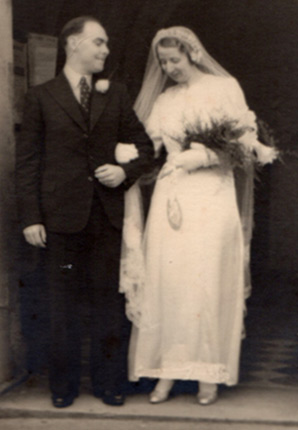
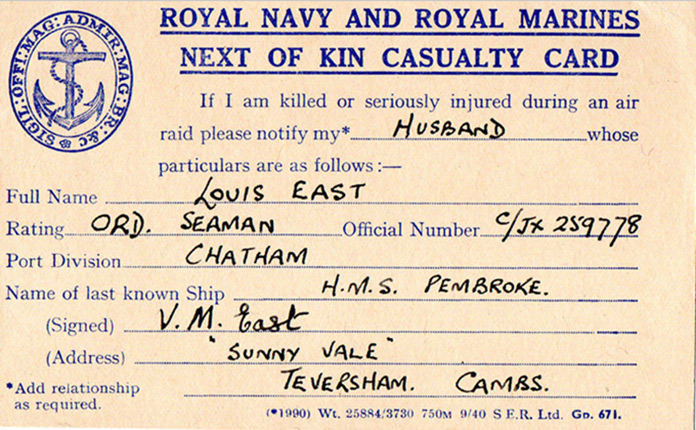
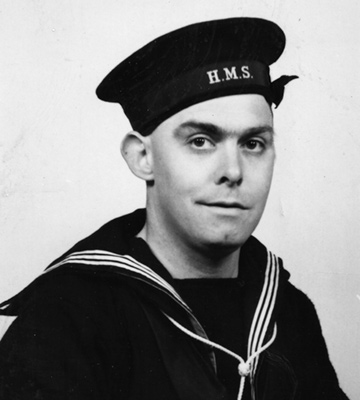
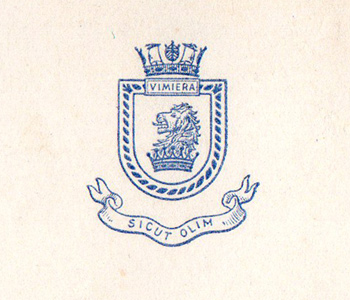
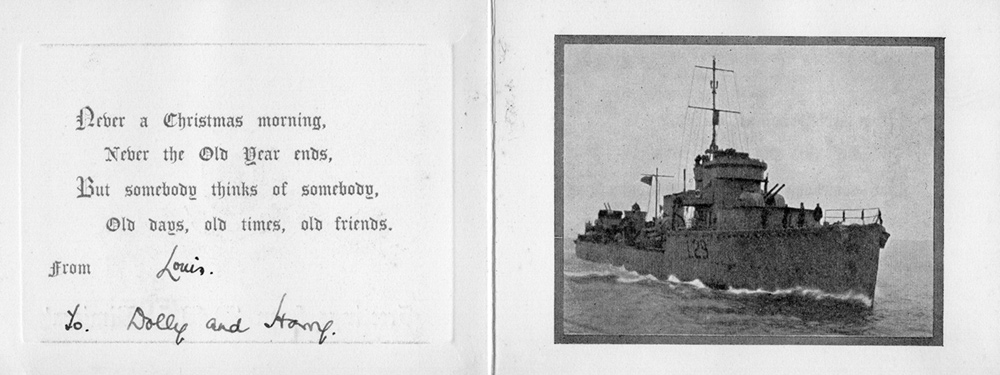
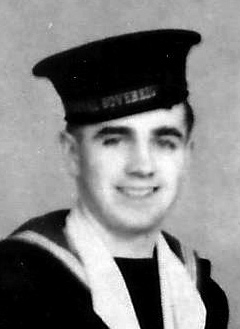 Frank Stubley, JX 148205, was born at Holbeach in Lincolnshire, on 30 December 1920, and went to HMS Ganges
as a boy sailor in 1936. He enlisted in the Royal Navy for 12 years on
his 18th birthday in 1938 and served as OD on the Revenge Class
Battleships, HMS Revenge and HMS Royal Sovereign. He joined the I Class destroyer HMS Imogen on 24 August 1939 and took part in the Norway campaign.
Frank Stubley, JX 148205, was born at Holbeach in Lincolnshire, on 30 December 1920, and went to HMS Ganges
as a boy sailor in 1936. He enlisted in the Royal Navy for 12 years on
his 18th birthday in 1938 and served as OD on the Revenge Class
Battleships, HMS Revenge and HMS Royal Sovereign. He joined the I Class destroyer HMS Imogen on 24 August 1939 and took part in the Norway campaign. 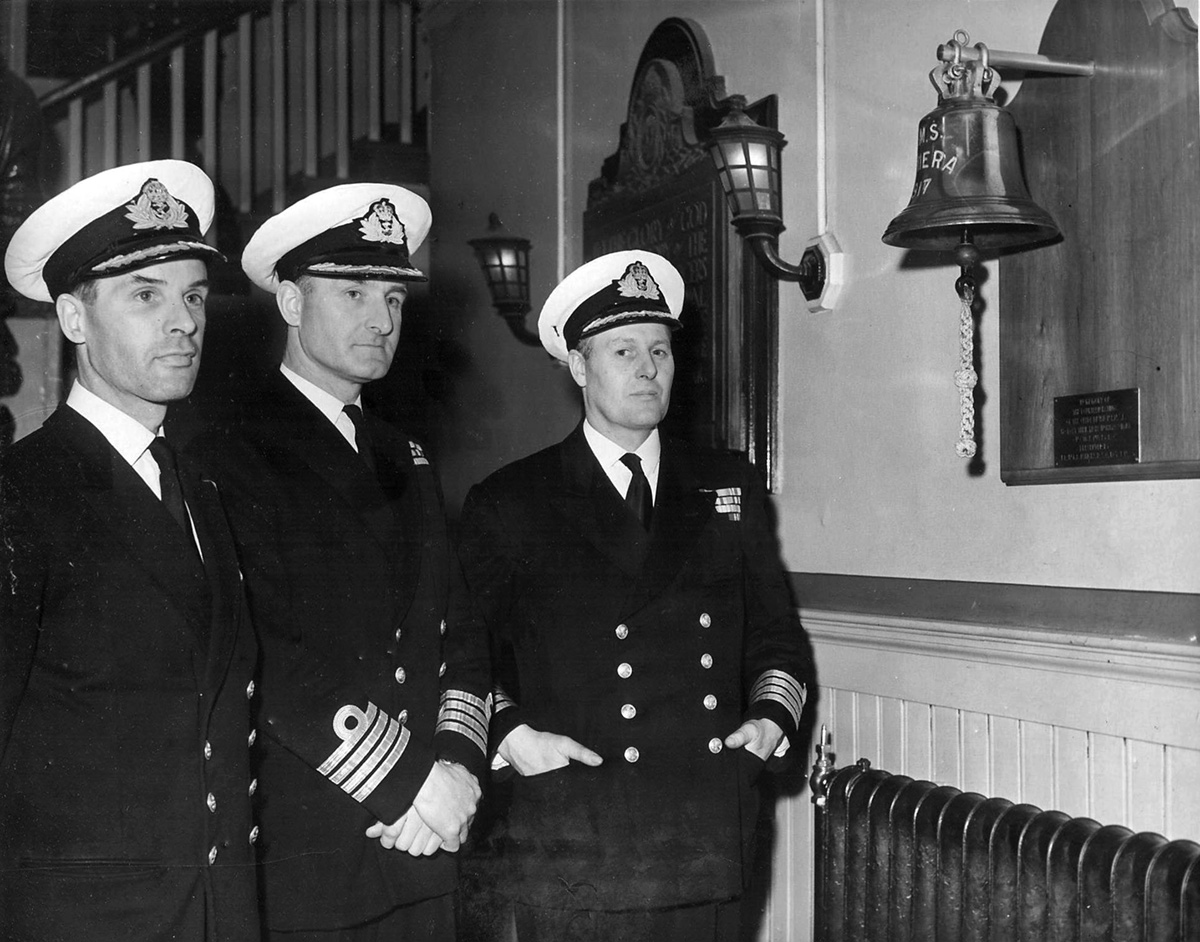

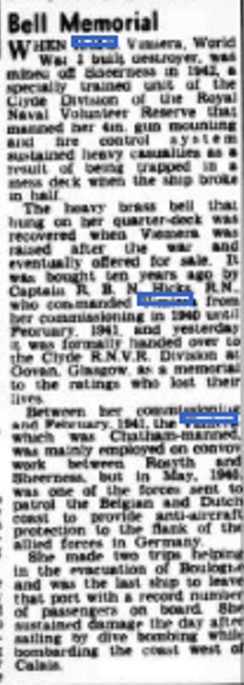
 BRIGGS, Robert William, Able Seaman, BEM RFR, C/J 98193, MPK [106]
BRIGGS, Robert William, Able Seaman, BEM RFR, C/J 98193, MPK [106]










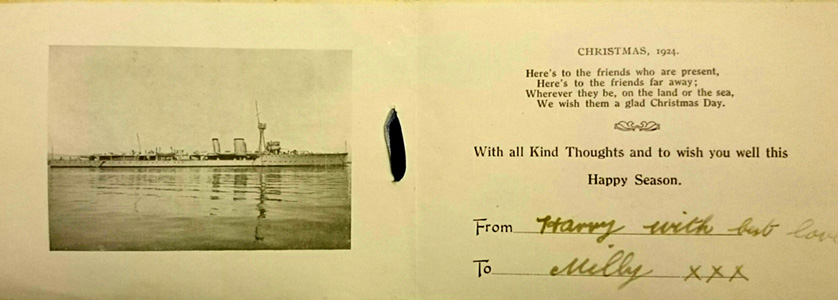


 Reginald John Harris was born on 21 June 1921 and enlisted in the
Navy on his eighteenth birthday in 1939. He was a "brewey
Reginald John Harris was born on 21 June 1921 and enlisted in the
Navy on his eighteenth birthday in 1939. He was a "brewey  Leslie William Henry Reading was born in the East End of London
in March 1916. He left behind a widow and a baby daughter, aged two
months. He was able to see them just once, briefly, when the baby
was a few days old.
Leslie William Henry Reading was born in the East End of London
in March 1916. He left behind a widow and a baby daughter, aged two
months. He was able to see them just once, briefly, when the baby
was a few days old. 




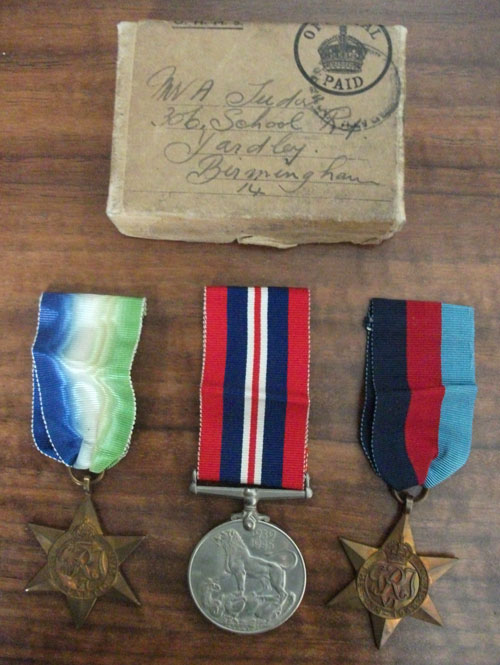
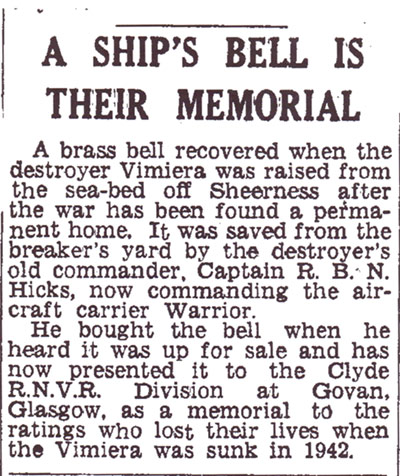
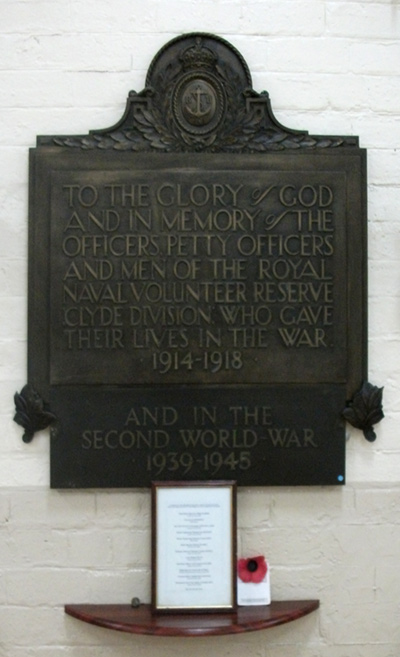
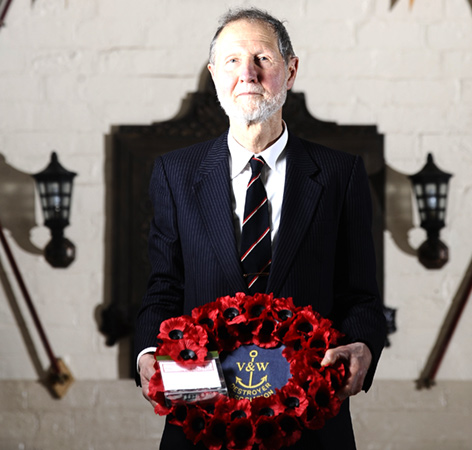 For whom the bell tolls ...
For whom the bell tolls ...